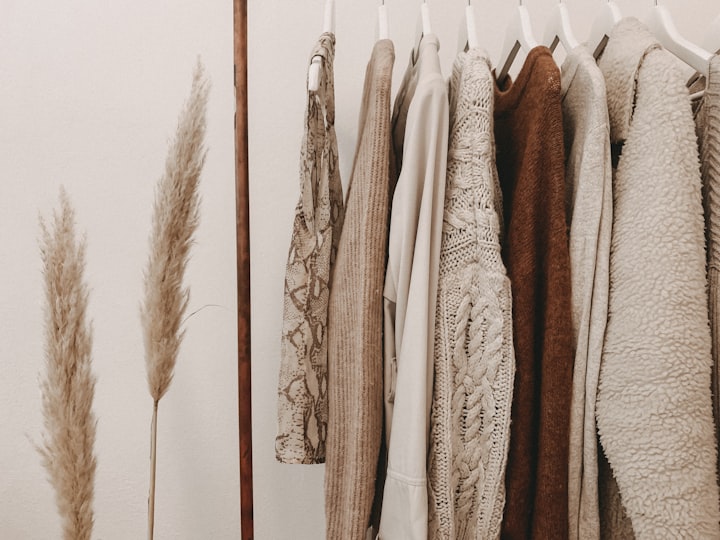How Tweed Has Stood The Test of Time
Tweed has grown to be one of the most iconic materials in fashion. Here we explore its origins and how it has changed over the years.

Tweed's history dates back to 18th century Scotland where the term was actually coined accidentally in 1826 due to a misread label. The label read 'tweel', which was coincidentally worn by gentlemen shooting or fishing near the river Tweed. Tweed has since become a classic Scottish material that is known all over the world.
Tweed has grown to be one of the most iconic materials in the fashion industry and has changed from protecting against harsh winters into a material worn by royalty. Here we explore the origins of the fabric and how it has changed over time.
From humble beginnings
Originally, tweed was crafted from the land for practical peasant wear for outdoor work such as farming on remote islands which were faced with harsh and volatile weather. Naturally, wool repels water, with its thick and coarse texture it is particularly durable and insulative. It emerged as a cottage industry in Hawick that used wool from local sheep and the reliable supply of water from the local river Teviot. As it is produced from natural wool, each tweed garment is unique — by choosing different breeds of sheep, garment makers can plan a design and pattern that will emerge naturally. Not only appreciated for their protective characteristics, but the skilled blending of earthy colours from the natural surroundings. And from there, bunch-dyeing off set the iconic tweed patterns that we know today.
From farmer's favourite to fashion forward
In the first part of the 19th century, money was becoming an issue for many Scottish Highland lords whose properties interested the likes of many English noblemen and aristocrats. As the market to rent or buy Scottish country estates grew, so did the camouflage fashion for hunting, shooting, and fishing activities.
In 1848, Prince Albert purchased Balmoral Castle in Aberdeenshire. As it would’ve been considered offensive for an English noble to wear the tartan of an existing clan, Prince Albert commissioned the production of his own Balmoral tartan in grey and granite tones with hints of blue and red in commiseration of Highland tradition and woven as tweed.
And so, the first Estate Tweed was born, used to identify and feed people who lived and worked in the same estate. Subsequently, it became custom for other estate owners to commission their own design of tweeds, which echoed across other wealthy and noble members of society, becoming fashionable garb for the upper and middle classes. Tweed was also worn by Sir Edmund Hillary and Sherpa Tenzing Norgay on the first ascent of Mount Everest, a testament to how well the material isolates against harsh cold weather.
The modern tweed
Today, tweed more closely represents royalty than its ancestral roots, establishing an enduring place in the international fashion industry. Now, a broad selection of sophisticated tweed pieces are sold around the world such as tweed waistcoats. Notably, Coco Chanel’s couture jacket produced from Linton Tweed, which has become a timeless classic decades later from its introduction in 1954, one of the most desired pieces of clothing that is reinvented each year.
Fortunately, wool is one of the most sustainable textile fibres and has little damage on the environment as well as being biodegradable. In the current days need of seeking sustainable fashion, tweed is known as an environmentally friendly fabric and is subsequently expected to pass the test of time.
There are different varieties of tweed, including Harris Tweed, a complex design where the weaver has to tie in more than 1400 individual threads by hand. Harris Tweed is underpinned by the Harris Tweed Act 1993 — to be the genuine article of clothing, the fabled fabric must be made from pure virgin wool, handwoven at the home of the weaver in the Outer Hebrides of Scotland, and then returned to the mill where it is authenticated by a stamper with the Orb trademark to protect the integrity of the product. The Harris Tweed Orb is the oldest British trademark in use, dating back for more than a century.
Heriot-Watt University School of Textiles and Design has collaborated with Harris Tweed Hebrides to develop new woven fabric to be used for interiors and fashion, introducing new design practices and technological innovation.
Speaking about the project, Professor Alison Harley, Creative Director at the School of Textiles and Design, said, "This project brings together two distinctive and well-established Scottish textile institutions to develop talent, creative thinking and innovative practice.
"Thanks to our reputation in the global textile sector we've built up a track record of success in collaborations of this kind, developing creative talent, contributing to textile technology advancements and building the commercial potential of new products, so we're very much looking forward to this opportunity to work with one of the world's most iconic textile brands."
This is indeed an industry which has a long and distinguished story to tell. With a royal history that propelled tweed into luxury fashion worn by aristocrats to fashion conscious customers, tweed truly has stood the test of time.
About the Creator
Enjoyed the story? Support the Creator.
Subscribe for free to receive all their stories in your feed. You could also pledge your support or give them a one-off tip, letting them know you appreciate their work.





Comments
There are no comments for this story
Be the first to respond and start the conversation.